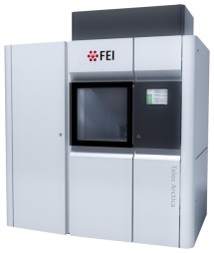+ Open data
Open data
- Basic information
Basic information
| Entry | Database: PDB / ID: 9dwv | |||||||||
|---|---|---|---|---|---|---|---|---|---|---|
| Title | Ternary complex of CRBN-DDB1-PPIL4 RRM domain with FPFT-2216 | |||||||||
 Components Components |
| |||||||||
 Keywords Keywords | LIGASE / CRBN / molecular glue / E3 ligase / PPIL4 | |||||||||
| Function / homology |  Function and homology information Function and homology informationnegative regulation of monoatomic ion transmembrane transport / positive regulation by virus of viral protein levels in host cell / spindle assembly involved in female meiosis / epigenetic programming in the zygotic pronuclei / UV-damage excision repair / biological process involved in interaction with symbiont / regulation of mitotic cell cycle phase transition / WD40-repeat domain binding / Cul4A-RING E3 ubiquitin ligase complex / Cul4-RING E3 ubiquitin ligase complex ...negative regulation of monoatomic ion transmembrane transport / positive regulation by virus of viral protein levels in host cell / spindle assembly involved in female meiosis / epigenetic programming in the zygotic pronuclei / UV-damage excision repair / biological process involved in interaction with symbiont / regulation of mitotic cell cycle phase transition / WD40-repeat domain binding / Cul4A-RING E3 ubiquitin ligase complex / Cul4-RING E3 ubiquitin ligase complex / Cul4B-RING E3 ubiquitin ligase complex / ubiquitin ligase complex scaffold activity / negative regulation of reproductive process / negative regulation of developmental process / locomotory exploration behavior / viral release from host cell / cullin family protein binding / positive regulation of Wnt signaling pathway / ectopic germ cell programmed cell death / negative regulation of protein-containing complex assembly / positive regulation of viral genome replication / proteasomal protein catabolic process / positive regulation of gluconeogenesis / mRNA Splicing - Major Pathway / nucleotide-excision repair / peptidylprolyl isomerase / peptidyl-prolyl cis-trans isomerase activity / positive regulation of protein-containing complex assembly / Recognition of DNA damage by PCNA-containing replication complex / regulation of circadian rhythm / DNA Damage Recognition in GG-NER / Dual Incision in GG-NER / Transcription-Coupled Nucleotide Excision Repair (TC-NER) / Formation of TC-NER Pre-Incision Complex / Wnt signaling pathway / Formation of Incision Complex in GG-NER / Dual incision in TC-NER / Gap-filling DNA repair synthesis and ligation in TC-NER / positive regulation of protein catabolic process / cellular response to UV / rhythmic process / site of double-strand break / Neddylation / ubiquitin-dependent protein catabolic process / protein-macromolecule adaptor activity / Potential therapeutics for SARS / proteasome-mediated ubiquitin-dependent protein catabolic process / damaged DNA binding / transmembrane transporter binding / chromosome, telomeric region / protein ubiquitination / DNA repair / apoptotic process / DNA damage response / negative regulation of apoptotic process / protein-containing complex binding / nucleolus / perinuclear region of cytoplasm / protein-containing complex / extracellular space / DNA binding / RNA binding / extracellular exosome / nucleoplasm / metal ion binding / nucleus / membrane / cytosol / cytoplasm Similarity search - Function | |||||||||
| Biological species |  Homo sapiens (human) Homo sapiens (human) | |||||||||
| Method | ELECTRON MICROSCOPY / single particle reconstruction / cryo EM / Resolution: 3.5 Å | |||||||||
 Authors Authors | Baek, K. / Fischer, E.S. | |||||||||
| Funding support |  United States, 2items United States, 2items
| |||||||||
 Citation Citation |  Journal: Nat Commun / Year: 2025 Journal: Nat Commun / Year: 2025Title: Unveiling the hidden interactome of CRBN molecular glues. Authors: Kheewoong Baek / Rebecca J Metivier / Shourya S Roy Burman / Jonathan W Bushman / Hojong Yoon / Ryan J Lumpkin / Julia K Ryan / Dinah M Abeja / Megha Lakshminarayan / Hong Yue / Samuel Ojeda ...Authors: Kheewoong Baek / Rebecca J Metivier / Shourya S Roy Burman / Jonathan W Bushman / Hojong Yoon / Ryan J Lumpkin / Julia K Ryan / Dinah M Abeja / Megha Lakshminarayan / Hong Yue / Samuel Ojeda / Yuan Xiong / Jianwei Che / Alyssa L Verano / Anna M Schmoker / Nathanael S Gray / Katherine A Donovan / Eric S Fischer /  Abstract: Induced proximity by molecular glues refers to strategies that leverage the recruitment of proteins to facilitate their modification, regulation or degradation. As prospective design of molecular ...Induced proximity by molecular glues refers to strategies that leverage the recruitment of proteins to facilitate their modification, regulation or degradation. As prospective design of molecular glues remains challenging, unbiased discovery methods are necessary to discover new chemical targets. Here we establish a high throughput affinity proteomics workflow leveraging E3 ligase activity-impaired CRBN-DDB1ΔB in cell lysates for the unbiased identification of molecular glue targets. By mapping the interaction landscape of CRBN-binding molecular glues, we unveil 298 protein targets and demonstrate the utility of enrichment methods for identifying targets overlooked by established methods. We use a computational workflow to estimate target confidence and perform biochemical and structural validation of uncharacterized neo-substrates. We further identify a lead compound for the previously untargeted non-zinc finger PPIL4 through a biochemical screen. Our study provides a comprehensive inventory of targets chemically recruited to CRBN and delivers a robust and scalable workflow for identifying drug-induced protein interactions in cell lysates. | |||||||||
| History |
|
- Structure visualization
Structure visualization
| Structure viewer | Molecule:  Molmil Molmil Jmol/JSmol Jmol/JSmol |
|---|
- Downloads & links
Downloads & links
- Download
Download
| PDBx/mmCIF format |  9dwv.cif.gz 9dwv.cif.gz | 227.8 KB | Display |  PDBx/mmCIF format PDBx/mmCIF format |
|---|---|---|---|---|
| PDB format |  pdb9dwv.ent.gz pdb9dwv.ent.gz | Display |  PDB format PDB format | |
| PDBx/mmJSON format |  9dwv.json.gz 9dwv.json.gz | Tree view |  PDBx/mmJSON format PDBx/mmJSON format | |
| Others |  Other downloads Other downloads |
-Validation report
| Summary document |  9dwv_validation.pdf.gz 9dwv_validation.pdf.gz | 1.1 MB | Display |  wwPDB validaton report wwPDB validaton report |
|---|---|---|---|---|
| Full document |  9dwv_full_validation.pdf.gz 9dwv_full_validation.pdf.gz | 1.1 MB | Display | |
| Data in XML |  9dwv_validation.xml.gz 9dwv_validation.xml.gz | 48.3 KB | Display | |
| Data in CIF |  9dwv_validation.cif.gz 9dwv_validation.cif.gz | 73.2 KB | Display | |
| Arichive directory |  https://data.pdbj.org/pub/pdb/validation_reports/dw/9dwv https://data.pdbj.org/pub/pdb/validation_reports/dw/9dwv ftp://data.pdbj.org/pub/pdb/validation_reports/dw/9dwv ftp://data.pdbj.org/pub/pdb/validation_reports/dw/9dwv | HTTPS FTP |
-Related structure data
| Related structure data |  47268MC  9dwwC M: map data used to model this data C: citing same article ( |
|---|---|
| Similar structure data | Similarity search - Function & homology  F&H Search F&H Search |
- Links
Links
- Assembly
Assembly
| Deposited unit | 
|
|---|---|
| 1 |
|
- Components
Components
| #1: Protein | Mass: 127097.469 Da / Num. of mol.: 1 Source method: isolated from a genetically manipulated source Details: DDB1 (masking away BPB domain, residues 396-705) / Source: (gene. exp.)  Homo sapiens (human) / Gene: DDB1, XAP1 / Production host: Homo sapiens (human) / Gene: DDB1, XAP1 / Production host:  Trichoplusia ni (cabbage looper) / References: UniProt: Q16531 Trichoplusia ni (cabbage looper) / References: UniProt: Q16531 |
|---|---|
| #2: Protein | Mass: 50747.805 Da / Num. of mol.: 1 Source method: isolated from a genetically manipulated source Source: (gene. exp.)  Homo sapiens (human) / Gene: CRBN, AD-006 / Production host: Homo sapiens (human) / Gene: CRBN, AD-006 / Production host:  Trichoplusia ni (cabbage looper) / References: UniProt: Q96SW2 Trichoplusia ni (cabbage looper) / References: UniProt: Q96SW2 |
| #3: Protein | Mass: 9624.897 Da / Num. of mol.: 1 / Fragment: RRM domain, residues 240-318 Source method: isolated from a genetically manipulated source Source: (gene. exp.)  Homo sapiens (human) / Gene: PPIL4 / Production host: Homo sapiens (human) / Gene: PPIL4 / Production host:  Trichoplusia ni (cabbage looper) / References: UniProt: Q8WUA2, peptidylprolyl isomerase Trichoplusia ni (cabbage looper) / References: UniProt: Q8WUA2, peptidylprolyl isomerase |
| #4: Chemical | ChemComp-ZN / |
| #5: Chemical | ChemComp-A1BC8 / ( Mass: 292.314 Da / Num. of mol.: 1 / Source method: obtained synthetically / Formula: C12H12N4O3S / Feature type: SUBJECT OF INVESTIGATION |
| Has ligand of interest | Y |
| Has protein modification | N |
-Experimental details
-Experiment
| Experiment | Method: ELECTRON MICROSCOPY |
|---|---|
| EM experiment | Aggregation state: PARTICLE / 3D reconstruction method: single particle reconstruction |
- Sample preparation
Sample preparation
| Component | Name: Ternary complex of CRBN-DDB1-PPIL4 RRM domain with FPFT-2216 Type: COMPLEX / Entity ID: #1-#3 / Source: RECOMBINANT |
|---|---|
| Source (natural) | Organism:  Homo sapiens (human) Homo sapiens (human) |
| Source (recombinant) | Organism:  Trichoplusia ni (cabbage looper) Trichoplusia ni (cabbage looper) |
| Buffer solution | pH: 7.5 |
| Specimen | Embedding applied: NO / Shadowing applied: NO / Staining applied: NO / Vitrification applied: YES |
| Vitrification | Cryogen name: ETHANE |
- Electron microscopy imaging
Electron microscopy imaging
| Experimental equipment |  Model: Talos Arctica / Image courtesy: FEI Company |
|---|---|
| Microscopy | Model: FEI TALOS ARCTICA |
| Electron gun | Electron source:  FIELD EMISSION GUN / Accelerating voltage: 200 kV / Illumination mode: FLOOD BEAM FIELD EMISSION GUN / Accelerating voltage: 200 kV / Illumination mode: FLOOD BEAM |
| Electron lens | Mode: BRIGHT FIELD / Nominal defocus max: 2000 nm / Nominal defocus min: 800 nm |
| Image recording | Electron dose: 54 e/Å2 / Film or detector model: GATAN K3 (6k x 4k) |
- Processing
Processing
| EM software | Name: PHENIX / Category: model refinement |
|---|---|
| CTF correction | Type: PHASE FLIPPING AND AMPLITUDE CORRECTION |
| 3D reconstruction | Resolution: 3.5 Å / Resolution method: FSC 0.143 CUT-OFF / Num. of particles: 219802 / Symmetry type: POINT |
 Movie
Movie Controller
Controller





 PDBj
PDBj









